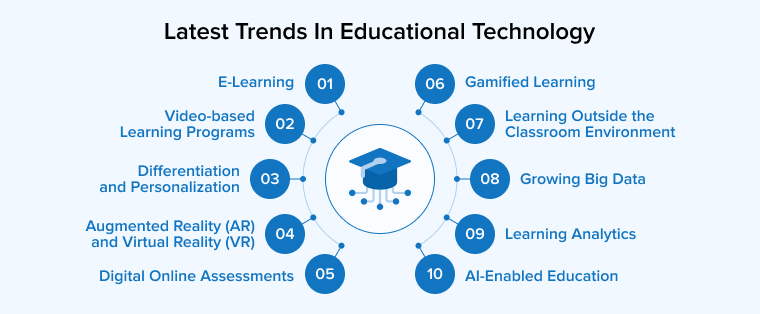The education landscape is evolving, and so are the companies that aim to transform it. Boundless Learning, a prominent player in educational technology, has recently made headlines due to significant layoffs. This development raises eyebrows and questions about what lies ahead for the sector.
As we dive deeper into these boundless learning layoffs, we uncover not just a story of workforce reduction but also a reflection of broader trends shaping how technology interacts with education today. What does this mean for educators, students, and tech innovators? Let’s explore!
The rise of technology in education
Technology has dramatically transformed the education landscape. Classrooms that once relied solely on textbooks now have interactive digital tools.
From learning management systems to virtual reality experiences, technology enhances engagement and comprehension. Students can access resources from anywhere, anytime. This flexibility caters to diverse learning styles.
Moreover, educators benefit, too. They can analyze student performance data in real time, allowing tailored instruction that meets individual needs. Adapting lessons based on insights promotes a more effective teaching approach.
As educational institutions embrace these innovations, collaboration becomes seamless across geographical boundaries. Online courses enable students from different regions to connect and learn together.
This rise of technology in education heralds a new era—one filled with limitless possibilities for learners and educators alike.
The impact of COVID-19 on education technology
The COVID-19 pandemic dramatically shifted the landscape of education technology. Classrooms transitioned from physical spaces to virtual environments almost overnight, accelerating the adoption of digital tools.
 Teachers and students relied heavily on platforms for remote learning. Zoom, Google Classroom, and other technologies became household names. The demand for online resources skyrocketed as institutions scrambled to adapt.
Teachers and students relied heavily on platforms for remote learning. Zoom, Google Classroom, and other technologies became household names. The demand for online resources skyrocketed as institutions scrambled to adapt.
This disruption forced educators to rethink traditional teaching methods. Hybrid models emerged, blending in-person classes with online elements. Flexibility became essential for both learners and educators.
Moreover, educational content evolved rapidly during this time. Interactive materials gained popularity, enhancing student engagement despite distance barriers.
While challenges arose—like accessibility issues—the silver lining was clear: a newfound appreciation for innovation in teaching practices reshaped expectations within the industry. Educational technology is now seen as an option and a necessity moving forward.
Shifting trends in education technology and the need for adaptability
The landscape of education technology is evolving rapidly. Traditional models give way to more dynamic approaches catering to diverse learning needs.

With the surge in online learning platforms, educators must rethink their strategies. It’s no longer just about delivering content; it’s about creating engaging experiences. Personalization has become a priority, allowing students to learn at their own pace.
Adaptability is essential for success in this environment. Companies must stay ahead by embracing emerging technologies like artificial intelligence and data analytics. These tools can help identify gaps and tailor solutions effectively.
Moreover, collaboration between educators and tech developers fosters innovation. Companies can design products that enhance learning outcomes by understanding real classroom challenges.
As trends shift towards hybrid models combining in-person and virtual instruction, flexibility will determine which organizations thrive or falter in the coming years.
The future of education technology
The future of education technology is ripe with possibilities. As we embrace a new era, personalized learning will take center stage. Adaptive platforms can cater to individual student needs, creating engaging and compelling learning experiences.
 However, recent challenges, such as the Boundless Learning layoffs, highlight the industry’s need for sustainability and innovation. Artificial intelligence will play a crucial role in this transformation. AI-driven tools can analyze learning patterns and provide tailored resources, making education more accessible for all students.
However, recent challenges, such as the Boundless Learning layoffs, highlight the industry’s need for sustainability and innovation. Artificial intelligence will play a crucial role in this transformation. AI-driven tools can analyze learning patterns and provide tailored resources, making education more accessible for all students.
Moreover, integrating virtual reality (VR) and augmented reality (AR) into classrooms promises immersive experiences that enhance understanding. Imagine exploring historical sites or conducting science experiments right from your home!
Collaboration among educators, technologists, and policymakers will be essential as we navigate these innovations. The potential for impactful educational solutions becomes limitless by fostering partnerships and encouraging open dialogue.
As challenges arise, agility within companies will determine success in this fast-evolving landscape. Embracing change while prioritizing student outcomes remains paramount for the future of educational technology.
Advice for companies in the education technology industry
Education technology companies should embrace flexibility. The landscape is constantly changing, and adaptability is key to survival. Keep an eye on emerging trends and be ready to pivot your strategies accordingly.
Investing in user experience can set you apart. Listen closely to feedback from educators and students alike. Their insights are invaluable for refining products that genuinely meet their needs.
 Collaboration with traditional educational institutions can also open doors. Form partnerships that allow for real-world testing of your solutions in classrooms.
Collaboration with traditional educational institutions can also open doors. Form partnerships that allow for real-world testing of your solutions in classrooms.
Focus on sustainability. With funding often uncertain in this sector, a long-term vision will help navigate tough times while ensuring continuous innovation and growth.
Conclusion: Looking towards a more innovative and adaptable future in education technology
The recent Boundless Learning layoffs serve as a crucial reminder of the fast-paced nature of education technology. Companies must embrace change and adapt to new demands as the industry evolves. The rise of remote learning tools and personalized educational experiences has created opportunities and challenges.
Education technology is on the brink of significant transformation. With advancements in AI, machine learning, and interactive platforms, there is potential for a more engaging learning experience that meets diverse needs. Companies should focus on innovation while staying attuned to market shifts.
A culture of adaptability will be essential for future success. Organizations that foster flexibility can navigate uncertainties better than those stuck in traditional models.
By prioritizing creativity and responsiveness, businesses can thrive even in turbulent times. Education technology holds immense promise if we stay committed to progress and understanding what learners need moving forward.

